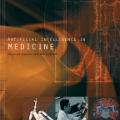In the picture-word interference paradigm, participants name pictures while ignoring a written or spoken distractor word. Naming times to the pictures are slowed down by the presence of the distractor word. Various properties of the distractor modulate this slow down, for example naming times are shorter with frequent vs. infrequent distractors. Building on this line of research, the present study investigates in more detail the impact of distractor and target word properties on picture naming times. We report the results of several Bayesian meta-analyses, based on 35 datasets. The aim of the first analysis was to obtain an estimation of the size of the distractor frequency effect, and of its precision, in typical picture-word interference experiments where this variable is not manipulated. The analysis shows that a one-unit increase in log frequency results in response times to the pictures decreasing by about 4ms (95% Credible Interval: [-6, -2]). With the second and third analyses, we show that after accounting for the effect of frequency, two variables known to influence processing times in visual word processing tasks also influence picture naming times: distractor length and orthographic neighborhood. Finally, we found that distractor word frequency and target word frequency interact; the effect of distractor frequency decreases as the frequency of the target word increases. We discuss the theoretical and methodological implications of these findings, as well as the importance of obtaining high-precision estimates of experimental effects.
翻译:在图片词干扰范式中, 参与者在忽略书面或口头偏移词的同时点出图片, 而忽略了书面或口头的偏移词。 图片的命名时间会因偏移词的存在而减慢。 分散器调制这种减慢速度的各种特性, 例如, 与经常的偏移器相比, 命名时间会缩短。 以这一研究线为基础, 本研究报告更详细地调查分散器和目标字属性对图片命名时间的影响。 我们根据35个数据集报告了几个巴耶斯元分析的结果。 第一次分析的目的是在不操纵此变量的典型图片词干扰实验中, 估计分散频率效应及其精确度的大小。 分析显示, 一单位的频率增加导致图片减少大约4米( 95% Cribable Interval: [ 6, - 2 ) 。 我们通过第二和第三次分析, 显示在计算频率影响后, 两个已知的变量, 在视觉文字处理任务中, 也会影响命名时间: 转移频率的长度和偏移频率或偏移频率的频率, 分析结果会增加。 最后, 我们发现, 我们发现这些频率的频率的频率影响, 的频率影响, 我们作为感变频的频率影响, 的频率影响, 作为感变的频率的频率, 的频率的频率的频率, 分析结果的频率的频率的频率的频率的频率的频率会增加。</s>




